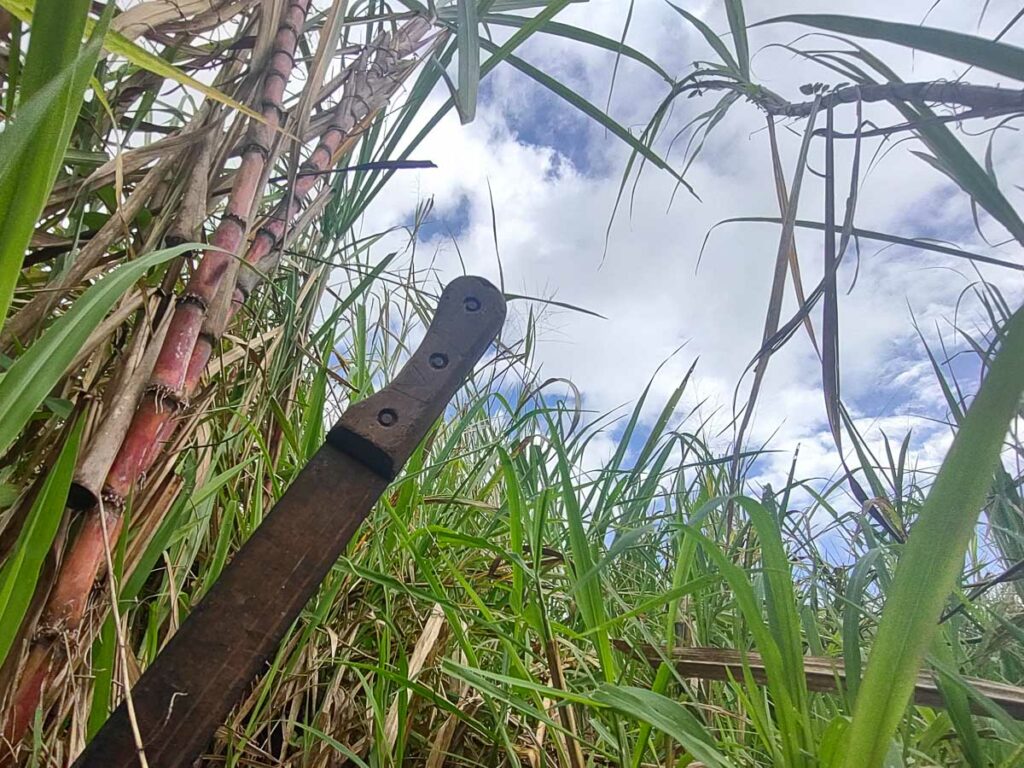
In the hushed dawn of a Jamaican morning, the air hung heavy with the promise of another gruelling day on the sugar plantation. As the sun lazily crawled above the horizon, its golden fingers touched the vast fields of sugarcane, casting long shadows that seemed to stretch into eternity. The oppressive humidity wrapped the plantation in a suffocating embrace, and the distant murmur of waves crashing against the shore provided a stark contrast to the silence that gripped the labourers’ quarters.
Amidst the endless rows of sugarcane, the enslaved toiled with the rhythmic precision of those condemned to a life dictated by the whims of the plantation overseer. The sun’s relentless gaze bore witness to backs bent in submission, hands calloused by the unforgiving machete’s embrace. Each swing of the blade marked not only the harvest of sugarcane but also the extraction of life from those forced to endure the brutality of the plantation system.
The overseer, a faceless figure in the shadows, cracked the whip with a cold detachment, the sharp sound slicing through the stifling air. The enslaved moved in a dance of despair, their bodies swaying to the merciless rhythm of forced labour. This was the unyielding routine, the cycle of oppression that echoed through Jamaican history.
As the day wore on, the sugarcane fields became a crucible of suffering. The sun, now a searing orb in the cloudless sky, bore witness to the silent screams of those who yearned for freedom amidst the towering green stalks.
Born into the shackles of slavery, Sharpe moved with an air of silent rebellion. His steps, though burdened by the weight of oppression, carried a resolve that transcended the physical bounds imposed upon him. Sharpe’s journey unfolded within and adjacent to the sugarcane fields, not as a labourer but as an educated man and a deacon. He became a beacon of knowledge and spiritual leadership amidst the relentless demands of the plantation.
In the solitude of the evening, when the sun painted the sky in hues of fiery defiance, Sharpe gathered with fellow souls who shared the burden of oppression. Beneath the sprawling branches of a secluded tree, they convened for a clandestine gathering – a gathering that would sow the seeds of dissent and set ablaze the fires of rebellion.
The machete, once an instrument of subjugation, now became a symbol of empowerment. The whispers of discontent swirled through the air, carried by a wind that seemed to carry the hopes of those yearning for freedom. The stage was set for a rebellion, a rebellion born from the crucible of the sugarcane fields, where the resilience of the oppressed would clash with the brutality of the oppressor.
Sharpe’s Strategic Gamble: A General Strike on Christmas Day
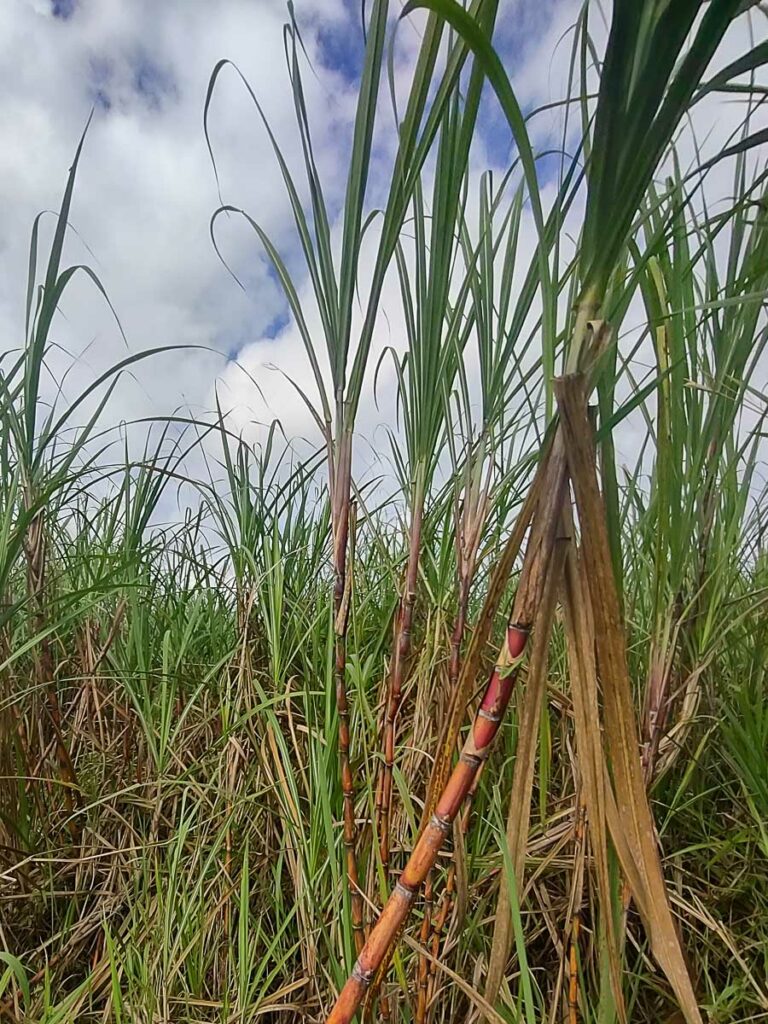
In the annals of Jamaican history, December 25, 1831, was destined to transcend its traditional significance. Samuel Sharpe hatched a daring plan that would set the stage for one of the most pivotal moments in the fight against slavery (Bussa and Christmas Rebellions, 2011).
Sharpe’s strategy was rooted in a keen awareness of the economic underpinnings of the plantation system. Christmas, a day traditionally marked by rest, presented an opportune moment for a mass refusal to toil in the fields. Sharpe, having followed the abolitionist movement’s discourse in London, misconstrued that emancipation had already been granted by the British Parliament (Samuel Sharpe, 2023).
As the sun dawned on that fateful Christmas Day, Sharpe’s vision unfolded across the plantations of western Jamaica. The enslaved, emboldened by the prospect of change, laid down their tools in a simultaneous act of defiance, demanding not just a reprieve from labour but a fundamental shift in their status as property. (This Month in History: Samuel Sharpe and the Christmas Rebellion, 2020).
The plan, initially conceived as a peaceful protest, was a tactical masterstroke. It sought to leverage the economic impact of a widespread work stoppage during the critical sugar cane harvest season, where the planters depended on the enslaved to work overtime for the swift processing of the crop. (Samuel Sharpe, 2023).
Transformation from Peaceful to Armed Rebellion
The strike, however, did not unfold as Sharpe had envisaged. The simmering discontent, fueled by years of oppression, erupted into a full-blown rebellion. The Kensington Estate, a symbol of the plantation system’s might, became the epicentre of the uprising, its Great House engulfed in flames that illuminated the night sky (Baptist War, 2023).
The flames, a visual metaphor for the fervour of resistance, signalled a shift from passive disobedience to active defiance. The enslaved, whose lives had been constrained by the brutal rhythms of plantation labour, had seized control of their narrative. Sharpe’s plan, a calculated gamble, had unleashed forces that would reverberate far beyond his home plantation.
The uprising swiftly extended its influence beyond the confines of St. James, permeating neighbouring parishes like Trelawny, Westmoreland, St. Elizabeth, and Manchester. This expansion was punctuated by notable events, including the incendiary destruction of significant plantation houses such as the Kensington Estate Great House (Baptist War, 2023).
While specific figures vary across sources, estimates suggest the participation of up to 60,000 slaves in the rebellion, a formidable force demanding not only an end to their bondage but a radical transformation in their status. (This Month in History: Samuel Sharpe and the Christmas Rebellion, 2020).
Unfortunately for the rebels, the Maroons, who in the past had been champions of resistance against oppression, took a fateful stance. The decision of the Accompong Maroons to align themselves with the British forces during the suppression of the rebellion marked a betrayal of the shared struggle for freedom. The Maroons, summoned by Sir Willoughby Cotton, engaged in a brutal confrontation against their enslaved brethren, dismantling the fragile unity that could have upended the oppressive system and winning the Baptist war for the British. This alliance, driven by a strategic calculation to secure their own interests, remains a tragic deviation from the collective pursuit of emancipation. (Baptist War, 2023).
Retribution and Aftermath
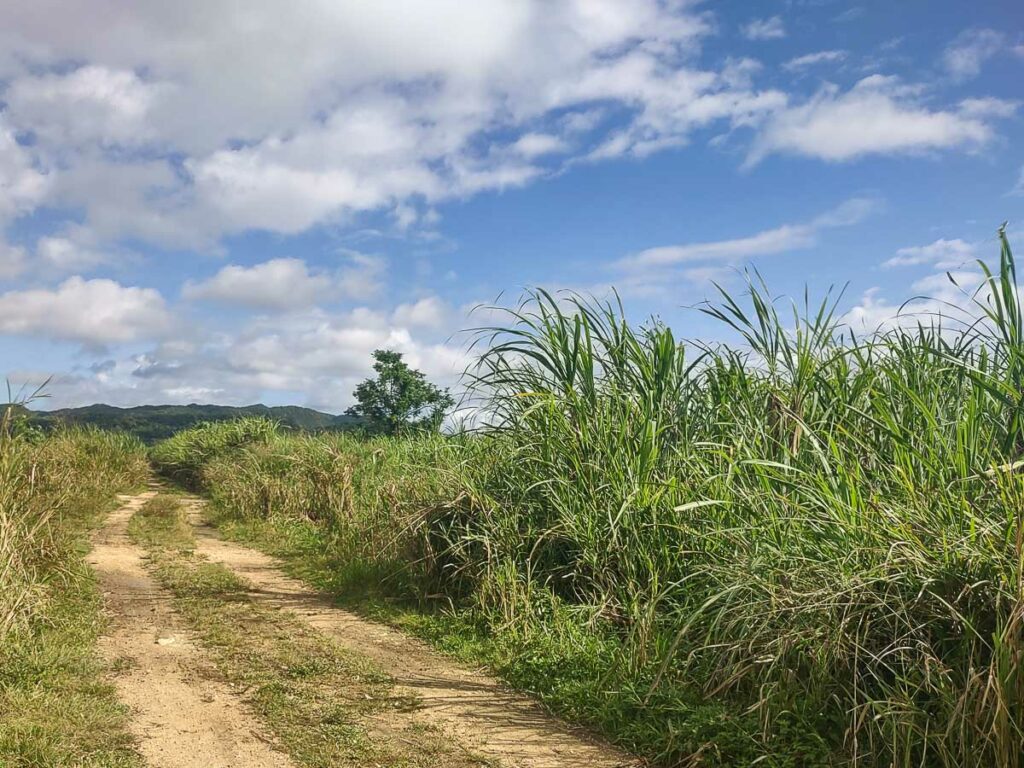
The aftermath of the Christmas Rebellion bore witness to a relentless wave of retribution that swept through the Jamaican plantations. The colonial authorities, alarmed by the audacity of the enslaved masses, unleashed a brutal response marked by widespread trials and executions. The courts, operating under the heavy hand of the ruling class, handed down severe judgments for the rebel slaves.
In the trials that ensued the consequences were severe, as more than 500 enslaved individuals were subjected to harsh retribution, facing execution for their involvement in the uprising. Numerous were hanged, and a gruesome deterrent was established by placing their severed heads around the plantations, serving as a macabre cautionary measure against potential future rebellions. (Wooten, 2020). The merciless retribution served as a grim reminder of the entrenched power dynamics that sought to suppress any challenge to the existing order.
Among those ensnared in the web of retribution was Samuel Sharpe. His capture marked a turning point, leading to a trial that culminated in his hanging on May 23, 1832. Sharpe’s fate mirrored the harsh consequences that befell many other leaders of the uprising, demonstrating the perilous danger of challenging the established order. The gallows, once a symbol of defiance for Sharpe, became a stark reminder of the price paid for daring to confront the institution of slavery.
“I would rather die on yonder gallows than live in slavery” -Sam Sharpe
Impact on Emancipation
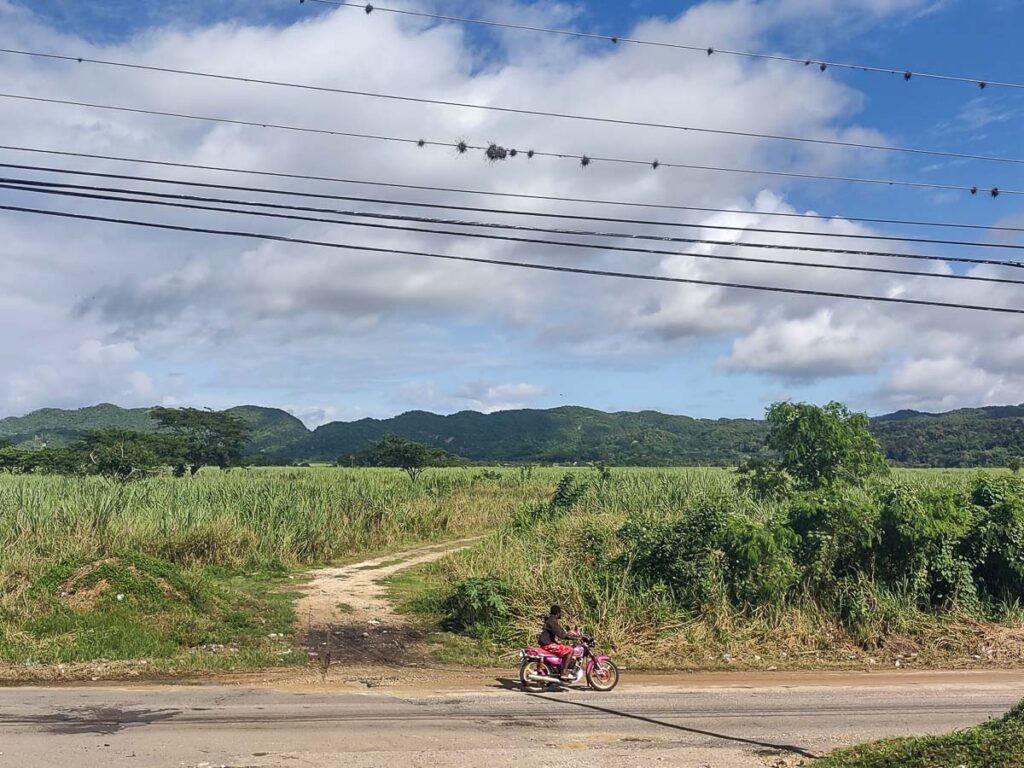
The resounding impact of the Christmas Rebellion on the abolitionist cause reached its pinnacle with the proclamation of full emancipation in the British Empire on August 1, 1838. This historic moment celebrated as the day when the shackles of slavery were finally cast aside, was a direct consequence of the relentless struggles and sacrifices witnessed in Jamaica, particularly during the Christmas Rebellion (This Month in History: Samuel Sharpe and the Christmas Rebellion, 2020).
The Slavery Abolition Act of 1833, a legislative response to the widespread condemnation of slavery fueled by events like the Christmas Rebellion, set the stage for this momentous emancipation. The Act itself marked a crucial step toward dismantling the entrenched system of forced labour and servitude that had persisted for centuries (This Month in History: Samuel Sharpe and the Christmas Rebellion, 2020)
The journey from the sugarcane fields of Jamaica to the corridors of power in Britain had a profound and lasting impact. The recognition of the enslaved individuals’ freedom played a pivotal role in shaping public opinion and influencing political decisions. The symbolism of August 1, 1838, extended beyond a mere legal proclamation; it became an emblem of triumph over oppression, a reflection of the indomitable spirit of those who had dared to defy the status quo.
The legacy of the Christmas Rebellion extends beyond the immediate abolition of slavery. It stands as a testament to the power of collective resistance, a force that not only shattered the chains of the enslaved but helped to reshape the moral compass of nations. The impact on emancipation, culminating in the liberation of countless individuals, represents a ray of hope and a reminder that the pursuit of justice and human rights can, indeed, alter the course of history.
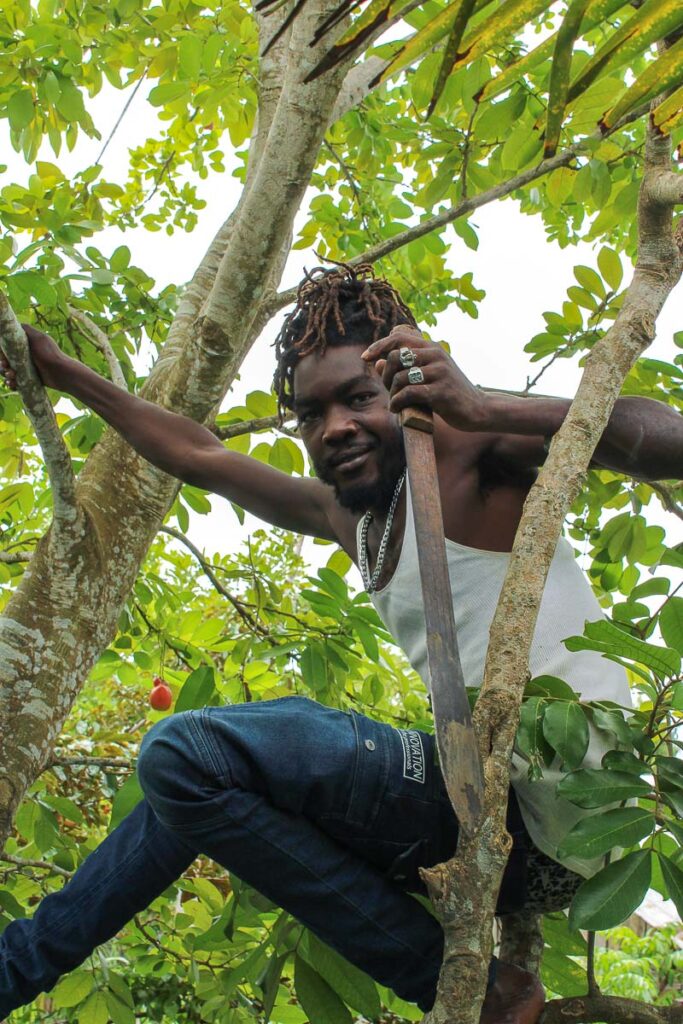
Interview with Sugar Cane Jamaican Farmer Jamar Thompson
A contemporary perspective on Sam Sharpe and the impact of the Christmas Rebellion on modern-day Jamaica.